Video content is an integral part of any website’s user experience. It makes it easier for users to understand what you offer, and it can demonstrate a product or service more elaborately than plain text.
Whether you’re a small business looking to make an impact or an enterprise with global reach, video is an effective way to increase your brand awareness and capture your audience’s attention.
In fact, studies show that users are more likely to convert after watching a video than after reading text or seeing images. According to Wyzowl, 88% of people say that they’ve been convinced to buy a product or service by watching a brand’s video.
So what makes videos so effective?
Content:
- The importance of video content on your website
- How to optimize video content
- Offer an instant play option
- Allow for easy sharing on social media
- Make it mobile-friendly
- Dedicate a specific page on your website for videos
- Use annotation to make it interactive
- How to display videos on your website the smarter way
- Share informational videos
- Create an emotional connection
- Provide how-to tutorials
- Introduce your company and employees
- Leverage popular video content such as GIFs
- Wrapping up
The importance of video content on your website
Video content is one of the most engaging ways to market your products and services. It’s also a great way to boost your search engine optimization (SEO).
Google uses videos as a ranking factor in its algorithm, and video content is more likely to rank well on search engines than other types of content. If you have videos on your website, this will help increase its overall authority in Google’s eyes, making it easier for people to find when searching for specific keywords related to your business.
Video content on websites also helps improve user experience. People love watching videos because it gives them something fun to do while browsing through websites or looking for product reviews or tutorials.
Dive into powerful video marketing strategies and tactics for your brand.
Videos allow customers to consume complex or detailed information easily. Additionally, a high-quality video can help answer questions quickly by providing all of the information a consumer needs at their fingertips.
How to optimize video content
It is not enough to plop a video on your website and instantly see an increase in traffic or engagement. There are a few ways to optimize video content on your website to maximize the effects.
Let’s take a look at some best practices.
Offer an instant play option
First, you need to make sure that the video loads quickly and seamlessly. An easy way to do this is by using YouTube or another online video hosting service that offers an instant play option. uSERP does an excellent job highlighting a play button in a different color to help users identify the instant play option.
This is especially important if you’re going to stream many videos on your website. You can also host your video files directly on your server, but this will require more maintenance work.
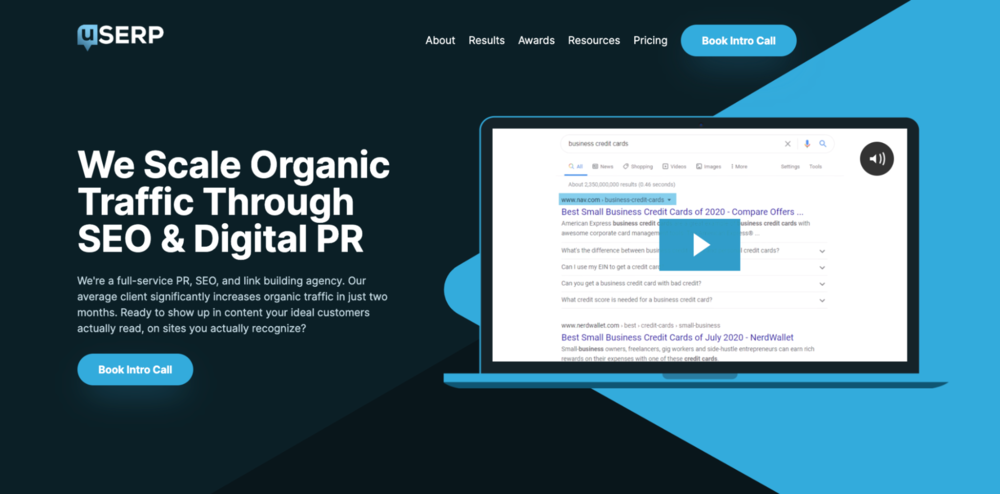
When people click on a video, they expect it to load quickly — they don’t want to wait around while their browser struggles with buffering data or, worse, crashes altogether. So make sure that any embedded videos are hosted on fast servers that can use streaming media smoothly without interruption (a content delivery network could help).
Another thing worth doing here is giving users an option to turn off the sound and read a written or transcribed version of the video. Some websites can do this automatically when they detect closed captions.
Alternatively, embedding transcripts into respective video descriptions can allow users to access text links at all times regardless of whether there’s audio present or not.
Allow for easy sharing on social media
One of the best ways to increase the reach of your videos is by sharing them on social media. This allows you to target potential customers who may not have found your site or paid attention once they found it. When people share your video on Facebook and Twitter, for example, they’re increasing its chance of being seen by more people — and those people may not otherwise have found your video.
You can also share your video content in emails — find out how to do it in our post!
Sharing links is also an easy way for your videos to go viral. For example, if your target market is teenagers who play video games, you should encourage them to record and share their gameplay on TikTok or YouTube to increase reach. YUPLAY is a champion in this arena by gathering people who share a passion for digital entertainment and sharing epic visuals of the top trending PC games.
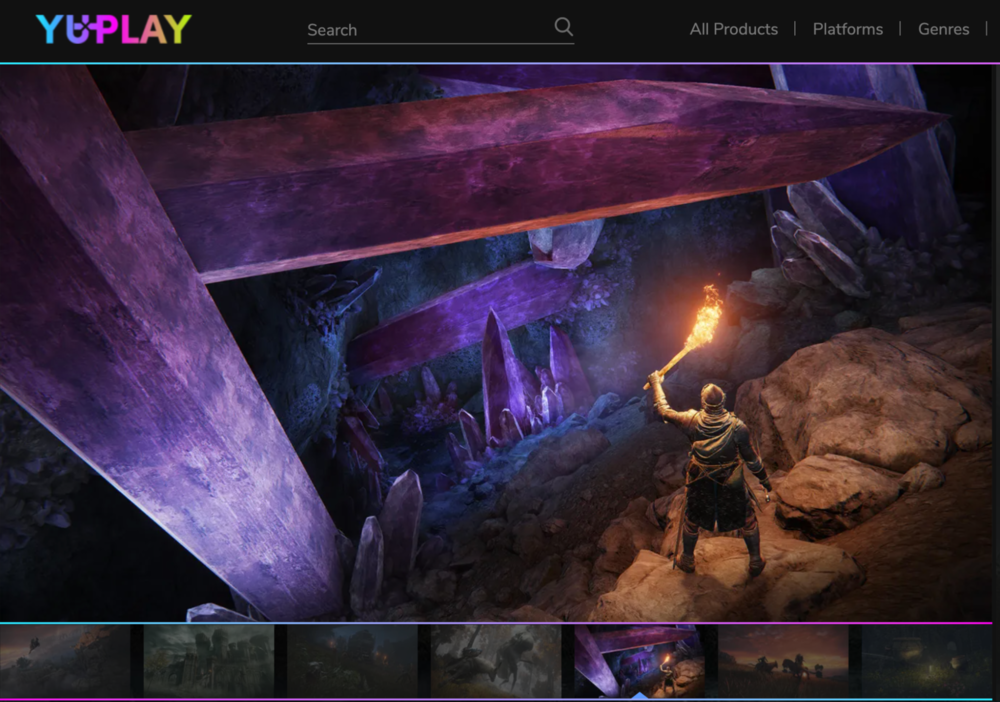
The person who originally shared the video does most of the work; now, they’re encouraging their friends and family members to watch what they’ve made.
Sharing videos helps spark conversation among viewers of similar interests: maybe in discussing strategy on Twitch or commenting on an intense game battle shown in a short clip on TikTok.
The goal is to get more eyes on your product or service, and video sharing can help speed that up.
Make it mobile-friendly
Mobile video has become a powerful way to reach your audience, but only if you optimize for mobile devices. Otherwise, users will have a terrible experience and bounce from your site without any action.
Make sure that your videos load quickly on all devices using a lightweight player that can quickly load in under 15 seconds.
We recommend looking into HTML5 players like JW Player or Vimeo. These platforms allow you to customize how long it takes for the video to start playing after clicking the play button so that users don’t need to wait before seeing what’s happening on screen.
Dedicate a specific page on your website for videos
When integrating videos into your website, make sure that people can find them. Create a specific page on your website entirely devoted to videos, just like Wordable does for their course videos.

Creating a dedicated page helps clarify the purpose of this section of your site and will help people know where they can find the content they’re looking for.
Find out ten important website design considerations for a new business.
It also makes it easy for search engines like Google to understand video content and index it in their database. A surefire way to make sure search engines can easily find all the videos on your site is by creating a video sitemap with all relevant keywords and titles.
Use annotation to make it interactive
Annotations are a great way to add value to your videos. Video annotation is the process of adding text to a video and can be uploaded as a file or typed directly into the video’s description.
Video annotation aims to add more information to your videos, make them easier to find, and increase viewership.
Video annotations are handy for long-form content like interviews and lectures because they allow you to provide notes that viewers can read at their own pace as they watch the video.
Annotations can also be added when uploading your video for clickable links, generating an interactive call-to-action for the viewer.
How to display videos on your website the smarter way
Video content is a powerful way to engage with visitors on your website. It can increase your conversion rate, improve user experience, and help you stand out from the competition.
If you aren’t already using video on your website, here are five innovative ways to get started:
- Share informational videos.
- Create an emotional connection.
- Provide how-to tutorials.
- Introduce your company and employees.
- Leverage popular video content such as GIFs.
Let’s dive into each of them in more detail.
Share informational videos
There are a lot of ways to show videos on your website. If you’re looking for a way to draw people in and provide value simultaneously, consider incorporating informational videos into the content that already exists on your site.
Take Samsara as an example. They include an information video in their blog post, “What is telematics?” to expand their written content with visual illustrations and graphics to further engage users.
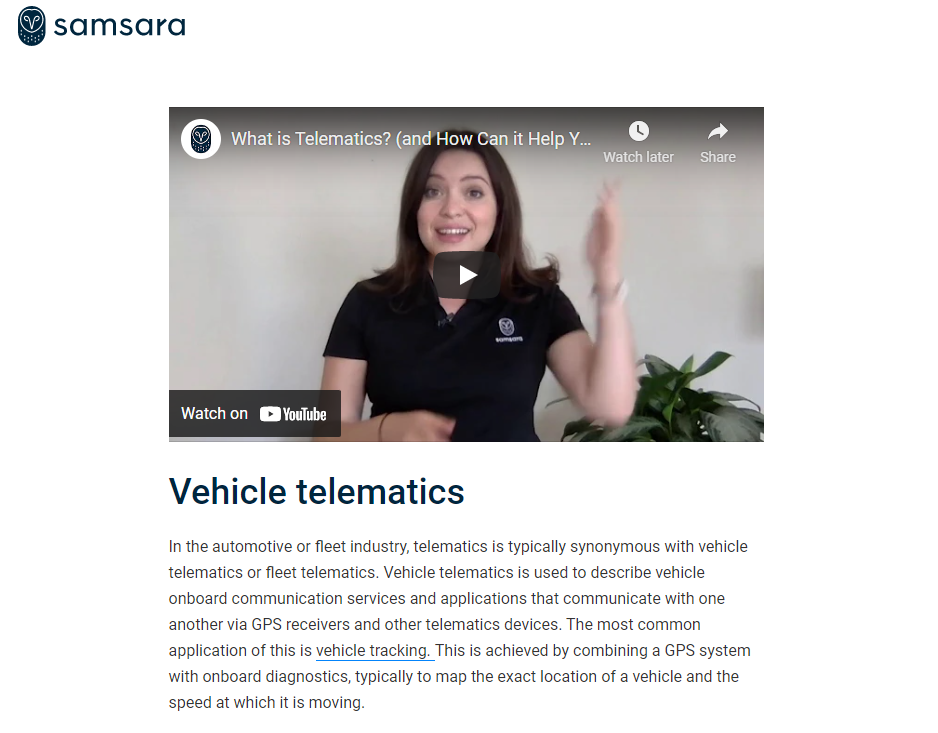
Informational videos are an opportunity to show off the benefits of your product or service by demonstrating how easy it is for customers to use something new and unfamiliar.
Create an emotional connection
Videos are a potent tool because you can use them to make an emotional connection with viewers. It is easier to display emotion and body language via video mediums compared to text alternatives.
You can create a sense of community and build trust by showing videos of people talking about your brand or product, or you can even show snippets from the people behind your brand and put faces to the name.
Videos like this help brands feel more human. For example, Freepik gives you a look inside the work of the creatives that make up their business in this video. It tells the story of its brand in a sentimental way by showcasing its team, offices, job, and dreams.
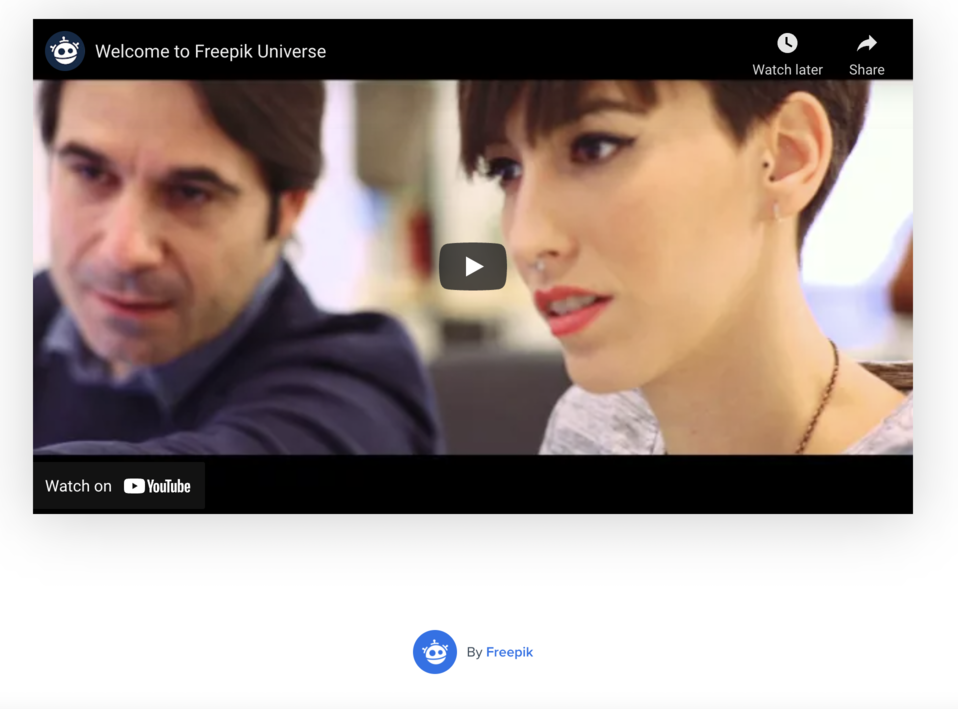
Using videos on your website to create an emotional connection is an effective marketing strategy for building trust, increasing sales, and improving customer loyalty. Adding a little personality to your brand can go a long way.
Provide how-to tutorials
How-to tutorial videos are ideal for educating your audience on a complex topic. These videos can help show how to use your product or service or provide step-by-step instructions for users who need extra guidance.
For example, creating an LLC as a first-time business owner can be highly stressful and confusing. But Tailor Brands does an excellent job breaking down the requirements when forming an LLC into seven simple steps. Their product page outlines the entire process in detail from start to finish.
Not only that, but they also offer a how-to video that summarizes the whole process in under 7 minutes — a piece of cake. You can kiss your anxiety goodbye.
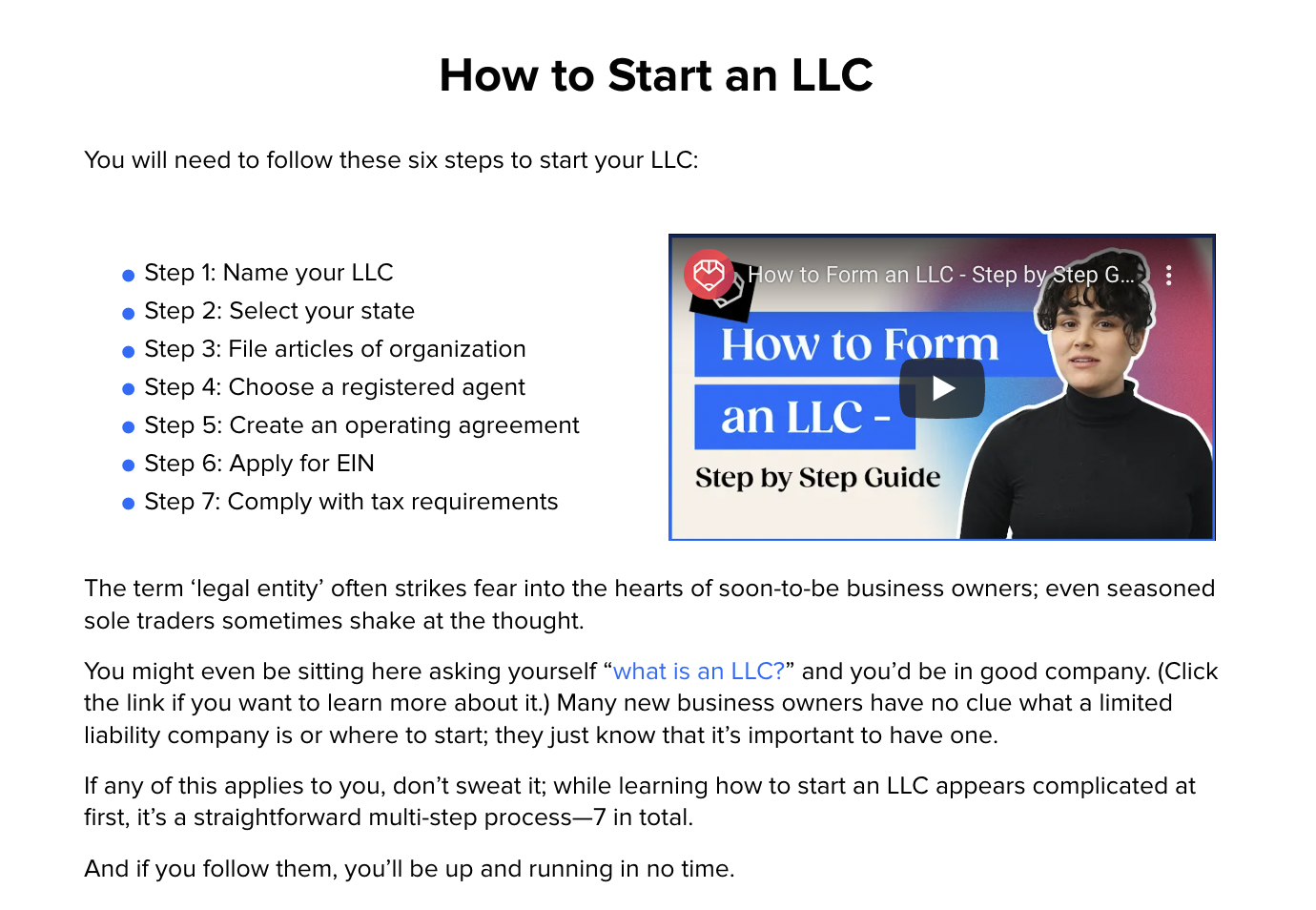
Including short videos that break down complex topics can help customers understand what’s expected of them, improve CX, and build credibility for your brand.
Introduce your company and employees
Introducing your company and employees is ideal for incorporating video on your website. You may have seen this type of video if you’ve ever visited a website for a large financial firm that has thousands of employees. They attempt to show the faces behind the brand and give visitors an idea of who they are working with.
But it doesn’t have to be just the big players that utilize this tactic. It is always wise to showcase the people behind the brand. For example, this eCommerce store understands the power behind human connection and how to present itself by adding a video of the people behind their mannequin company on their “about us” page.

Your video should show how your company is different from others in its industry — what makes it unique? The goal is to make it feel more personal by showing you’re part of something bigger than yourself. Having employees talk about why they love working at your company can help create an emotional connection, as discussed earlier, with viewers and make them want to work there too.
Leverage popular video content such as GIFs
As we’ve mentioned, videos are a great way to showcase your product or service on your website. But they aren’t the only way. A good GIF can be just as effective.
A GIF, or a Graphics Interchange Format, is a small moving picture file that can be embedded in a web page.
GIFs have been around for years, but their popularity has exploded in recent years due to social media sites like Twitter and Tumblr. Web users respond well to GIFs because they’re short and fun — they’re like mini-movies that can convey a lot of information quickly.
Find out some online and offline tools that can help you create GIFs and embed them in your emails.
Being brief is critical when communicating with customers; you want them to get what you’re saying in just a few seconds (or less). GIFs are so effective: They can easily show off some of the best features or benefits of your service or product in an entertaining way.
Wrapping up
Videos are great for several reasons: they can help you improve your SEO, increase customer engagement, and even serve as a replacement for traditional advertising campaigns.
The best way to do this is by optimizing videos for fast load times and making sure they run on mobile devices. You’ll also want to use videos to help create personal connections with customers and provide more detail about your products or services.
Now is the time to start incorporating more video content into your online presence — not because it’s trendy or cool, but because it will help drive traffic to your website, improve customer experience and grow your business.








